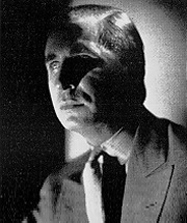Alexis de Sakhnoffsky
Automotive and industrial designer who was born in Moscow, Russia as Alexis Wladimirovich de Sakhnoffsky, the son of the financial advisor to Nicholas II, the last Czar. He escaped following the Russian Revolution and studied engineering in 1914 at the University of Lausanne, Switzerland, and studied arts and crafts at the Ecole des Arts et Métiers in Brussels starting in 1920. He began work for leading coachbuilder Vanden Plas in Brussels, Belgium, and became its art director in 1924.
Count de Sakhnoffsky immigrated to the U.S. in 1928, and was hired as art director for the Hayes Body Company in Grand Rapids, Michigan, where as art director, he designed the 1929 Cord L-29 ‘Hayes’ coupe, which won a Grand Prix Award in Paris. He created a design first with his famous series 8-115 ‘boattail’ speedster for the 1928 Auburn. He also designed the 1929 American Austin, the original U.S. ‘compact’ car, and later, for the re-named American Bantam Car Company, he designed the 1937 American Bantam car, predecessor of the famous 1941 World War II Jeep. The 1938 Bantam model is famous for being the inspiration of Donald Duck’s car.
When Hayes failed in 1931, Alex designed cars for Auburn Automobile, Cord, and Packard. He designed the 1932 Devaux, the 1933 Nash, the 1934 LaSalle, and the elegant 1934 12-cyl. Packard 1108 Sport Phaeton for Le Barron. He also worked for the White Motor Company, where he designed buses and streamlined tractor-trailer beer trucks for Canadian LaBatt Brewery from 1935 to 1947.
Sakhnoffsky completed a number of industrial designs including bicycles, the suggestive 1938 Emerson BD-197 ‘Mae West’ radio, kitchen items, and streamlined 1940s furniture by Heywood-Wakefield. He also designed many toy pedal cars during the 1930s for Steelcraft, a division of the Murray Ohio Manufacturing Company. From 1934 to the 1960s, he served as a technical editor for Esquire magazine, designing conceptual futuristic cars, trucks, and boats. He soon became known as an outspoken futurist and automotive stylist and became an American citizen in 1939. During the war, he returned to Russia as an Air Force Major with the U.S. Military Mission in Moscow. In the early 1950s (after the ill-fated Tucker automobile), he teamed up with Preston Tucker to design a sports car, the Tucker Carioca, which was never built. In 1963, he executed a portfolio of classic car drawings for Automobile Quarterly.

